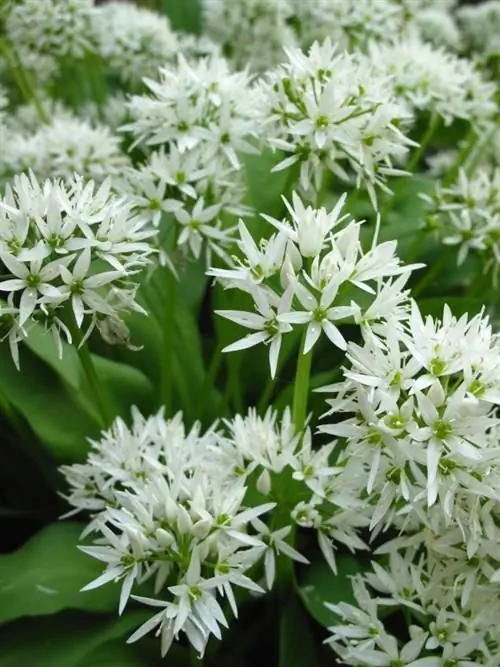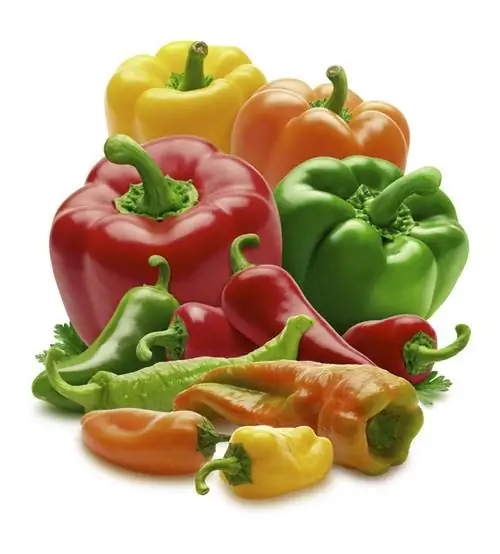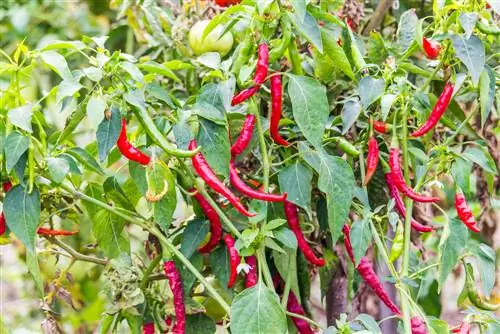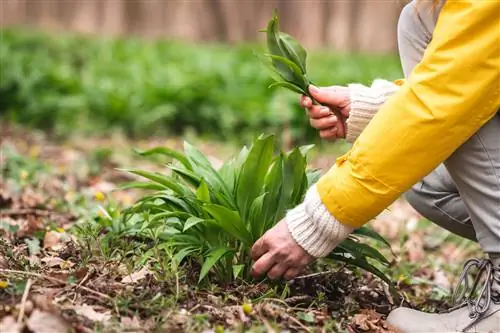- Author admin [email protected].
- Public 2023-12-16 16:46.
- Last modified 2025-01-23 11:20.
The wild garlic (Allium ursinum) has been used to season various dishes in its distribution area in Central Europe for several centuries. The leaves, buds and flowers have a garlic-like taste that varies depending on the season.
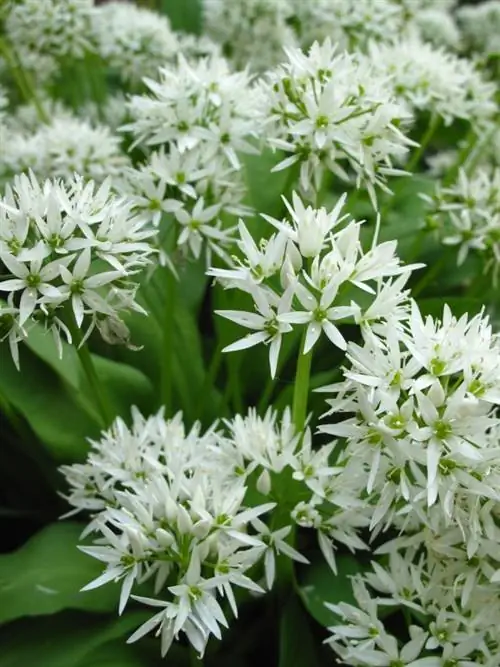
How and where should I plant wild garlic?
It is best to plant wild garlic in a shady location with humus-rich and moist soil. Sowing seeds, planting wild garlic bulbs or moving entire plants are suitable methods. The ideal harvest time for younger, milder leaves is March and April.
How do wild garlic plants grow?
Basically, wild garlic is a perennial plant whose good growth depends primarily on location factors such as the right soil substrate, the right level of light and sufficient moisture in the soil. The leaves grow up from the elongated bulbs deep in the ground every spring and often exude a clearly noticeable, characteristic smell. Already in the summer, the above-ground plant parts die off after the seeds are self-sown and all of the plants' energy is stored in the bulbs until they sprout again next spring.
Which location does wild garlic prefer?
In nature, wild garlic usually occurs in shady deciduous forests with humus-rich soil. Particularly in depressions with sufficient soil moisture, wild garlic can multiply into a dense carpet of plants within just a few years. If you want to plant wild garlic in your own garden, you should choose a shady and therefore evenly moist place for cultivation in the shade of trees or bushes.
When should you sow or plant wild garlic?
There are different options for specifically growing wild garlic in the garden:
- the sowing of seeds
- planting wild garlic bulbs
- transplanting whole plants
Plants from natural sources are often dug up to grow wild garlic in the garden. If the landowner's consent is available outside of protected areas, individual plants can be dug up with a spade or a digging fork. However, these must not dry out during transport to the new destination. Growing it in the garden is easier with commercially available wild garlic bulbs. Since wild garlic reproduces itself under good conditions, the bulbs should not be planted too closely. When sowing seeds, you should avoid preferring them and sow them directly at the planned location. Since wild garlic seeds need up to two years to germinate, it is otherwise difficult to maintain consistent soil moisture.
How is wild garlic propagated?
For propagation, individual bulbs are dug up from a dense stand of wild garlic or the seeds are harvested from the wilting wild garlic flowers.
When does wild garlic bloom?
The white inflorescences of wild garlic appear regionally differently from April to May. Shortly beforehand, the still closed buds can be harvested and pickled in vinegar like capers.
When is the best harvest time for wild garlic?
The taste of wild garlic is not as intense in March and April, so the young leaves are preferably harvested in these months. In later spring and summer the leaves become increasingly fibrous and begin to wilt.
Tips & Tricks
Planting wild garlic in your own garden can protect you from being confused with poisonous counterparts, but the leaves should still be tested for their garlic-like smell. If you suspect fox tapeworm, you should avoid raw consumption.

